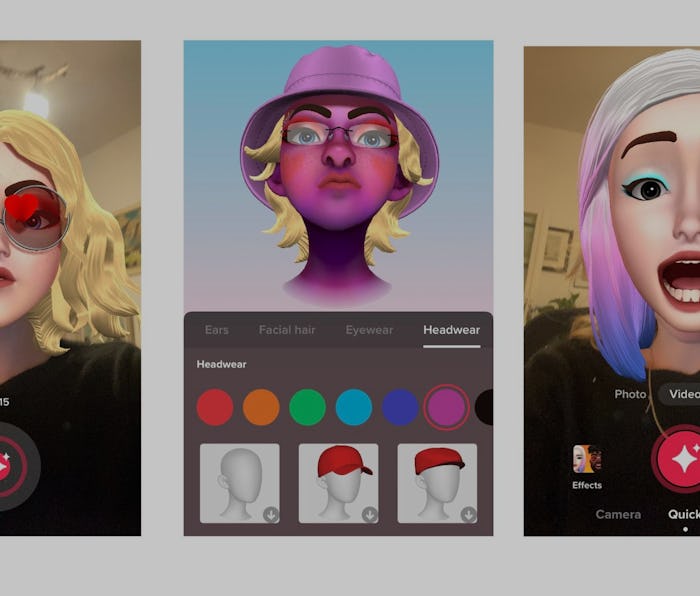Literally me
Here’s how TikTok’s clunky avatar feature works
TikTok’s version of Bitmoji and Memoji isn’t the easiest to use, but it gets the job done.

TikTok’s avatar feature is officially live. And it’s not exactly novel.
Ever since Snapchat introduced Bitmoji in 2016, the goofy, customizable avatars have peppered social media. Making a little cartoon version of yourself do something goofy isn’t high humor or high art, but it might make you chuckle.
Avatars might be a little cheugy, but social media companies are still investing in them. Apple cloned Bitmoji with Memoji in 2018, and Facebook and Instagram rolled out avatars earlier this year. (Input published a how-to guide in case you want to make one.)
Meta’s avatar push attempts to further popularize the cartoonish digital representations of people. Conveniently, little walking humanoid avatars fit with Zuck’s Snow Crash-inspired vision of the so-called metaverse.
And now, in 2022, TikTok is rolling out its own custom animated avatars.
How to — The process to make a TikTok avatar takes a few minutes to figure out.
- First, press the “+” button to open TikTok’s camera.
- When the camera is in selfie mode, tap “Effects” on the bottom left.
- Press the little magnifying glass, search “TikTok Avatar,” and choose the one with the most posts (it should be right at the top).
- Then you can either choose a pre-made avatar or customize your own.
It’s not amazing... — The biggest issue here is the lack of customization compared to similar offerings.. You can, however, choose your avatar’s skin tone, face shape, hairstyle, and accessories. Scroll so you don’t miss the tabs to customize your nose, mouth, ears, facial hair, eyewear, and headwear. Ultimately, I wasn’t quite satisfied with the options for hair and hair color, and I think I’d have a slightly better lookalike with the Apple, Snapchat, or Instagram avatars — or even with a Mii.
Once you’ve made your avatar, you can take a video where your head is replaced by its pixelated version. TikTok says it seeks to “improve and innovate to make sure the experience is truly representative of all who are on TikTok.”
The avatar is just one of TikTok’s effects — tools that range from practical (like the green screen) to preposterous (like a cross-eyed cow on top of your mouth). The AR filter boom started with Snapchat (remember the inescapable dog ears filter?), and now both Meta and TikTok have introduced relatively intuitive programs to create your own filters, called Spark AR Studio and Effect House, respectively.